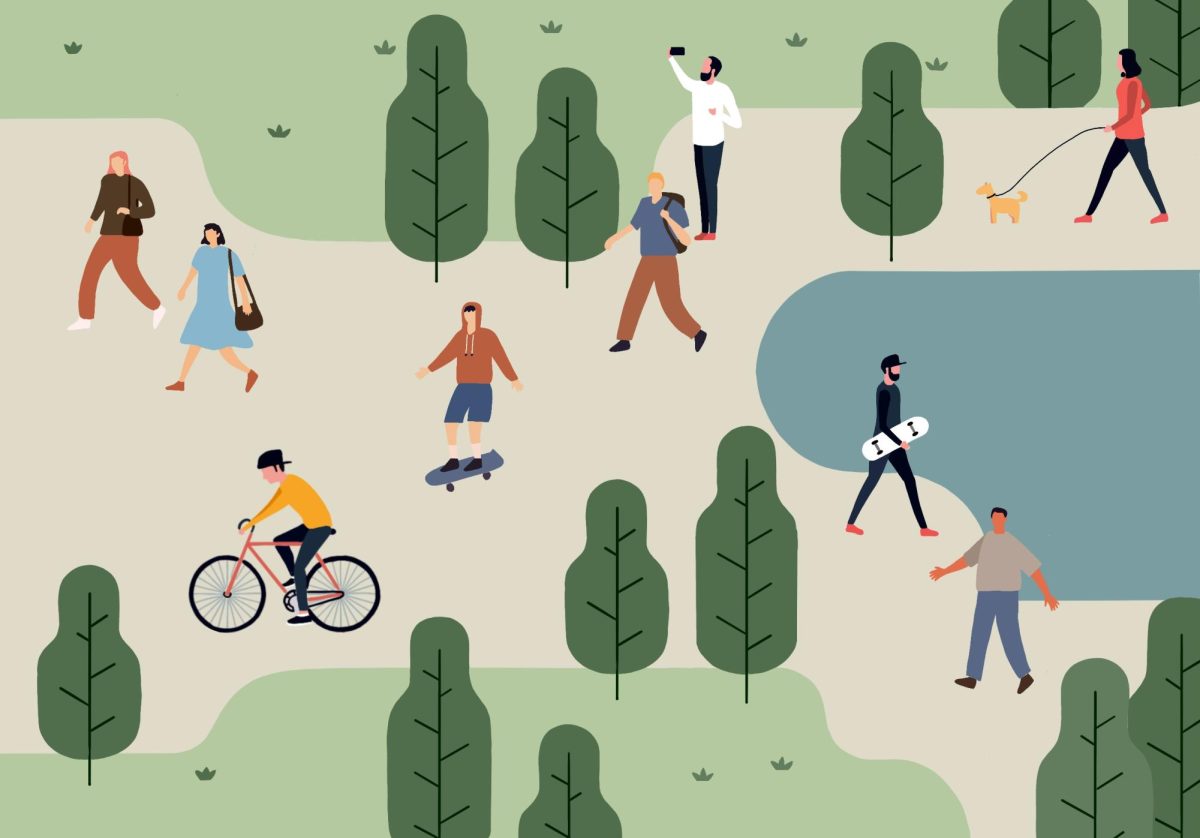The demolition of the former Nicollet Avenue Kmart building on Oct. 30 was met with celebration from Minneapolis city officials. Now, public attention is turning to the potential impact of the New Nicollet Redevelopment project.
At its original construction in 1977, the Nicollet Avenue Kmart sat on 10 acres of land and was representative of the transportation and economic values of its time: a large chain store and parking lot were indicative of an efficient and lucrative economy. The building, however, is seated in the center of Nicollet Avenue, putting a barrier in the flow of the street from north to south.
Since its inception, the Kmart has interrupted not only traffic patterns but the economic development and livability of the surrounding south Minneapolis neighborhoods, too. Barring off Nicollet Avenue was not a part of the site’s original design plan. Today, the city is seizing the opportunity to correct previous mistakes with the New Nicollet Redevelopment project.
The project is set to start road construction in 2025 and intends to reconstruct Nicollet Avenue between Lake Street and Cecil Newman Lane, restoring the street’s flow of traffic and using the remaining land to build versatile commercial and housing development.
According to communication from the city on behalf of the project’s team, their ultimate aim is to restore the walkability and livability of the area.
In an email statement to The Minnesota Daily, the city said the project’s goals are to “reconnect people and places, build for who’s here, let people live, work, shop and play here, build safe, fair and sustainable transportation networks [and] design safe and healthy communities.”
According to Fernando Burga, a University of Minnesota assistant professor in the Urban and Regional Planning Masters program in the Humphrey School of Public Affairs, one of the best practices for undertaking a project like this is considering the value and history of the land. Burga said the ongoing community outreach efforts for the New Nicollet Redevelopment project are an important indicator of this consideration.
“I think that currently, the most important thing that is happening is that there’s an intensive community engagement effort that is ongoing, and aims to be intentional,” Burga said. “Being able to consider the engagement of that work and the quality as well as its outcomes, I think is going to be key to determine the future of the site.”
Edward Goetz, the director of the University’s Center for Urban and Regional Affairs (CURA) and a University professor of urban and regional planning in the Humphrey School of Public Affairs, said the design of an urban planning project always has the potential to impact a community beyond physical appearance.
“The direct connection is between urban planning and how the city looks in a physical sense,” Goetz said. “There is also the impact on what and how the city operates in a social and economic sense as well.”
In the case of the New Nicollet Redevelopment project, the physical appearance revolves around the street construction that would reconnect Nicollet Avenue, impacting pedestrian traffic, transportation and accessibility, according to Burga. Burga added that the construction of mixed-use buildings will also have a vital impact on the livability of the area.
“By having these alternative land uses with their built forms and types, you can make it much more livable,” Burga said. “You can improve housing access, you can bring more people to walk and be in the community already, you can potentially provide more activity and more visibility into the greenway as well as the surrounding areas.”
While environment-friendly changes can positively impact the quality of life in a community, Goetz said a challenge of turning green is the influence it can have on the market value of an area.
“There’s growing awareness of what’s called green gentrification now,” Goetz said. “Modifications and improvements in the environment can actually make a place more attractive on the market, drive up housing costs and displace folks from those communities as they are improving.”
The city lists building affordable housing as one of the redevelopment project’s goals. Burga said navigating the market impacts of building sustainable spaces is challenging but not impossible.
“There are other places in the world where people live differently, where there’s other models such as co-housing or people don’t own property, they own collectively or they just never own property and just rent,” Burga said. “There are other ways of living together and living in a city together.”
According to the city’s email statement to the Daily, the project team is working to conduct thorough community engagement efforts to help determine the trajectory of the redevelopment project.
Burga said although the outcome of the New Nicollet Redevelopment project may not be registered for years, community engagement is a necessary first step to properly approaching a project like this, which could affect many different lives.
“It’s important to consider that this is an area of the city where there is a mixture of different populations that range in terms of class status, in terms of citizenship status, in terms of access, in terms of need and disparities,” Burga said. “Those are aspects that need to be considered if we consider how this site will bring enhancement to the community.”








